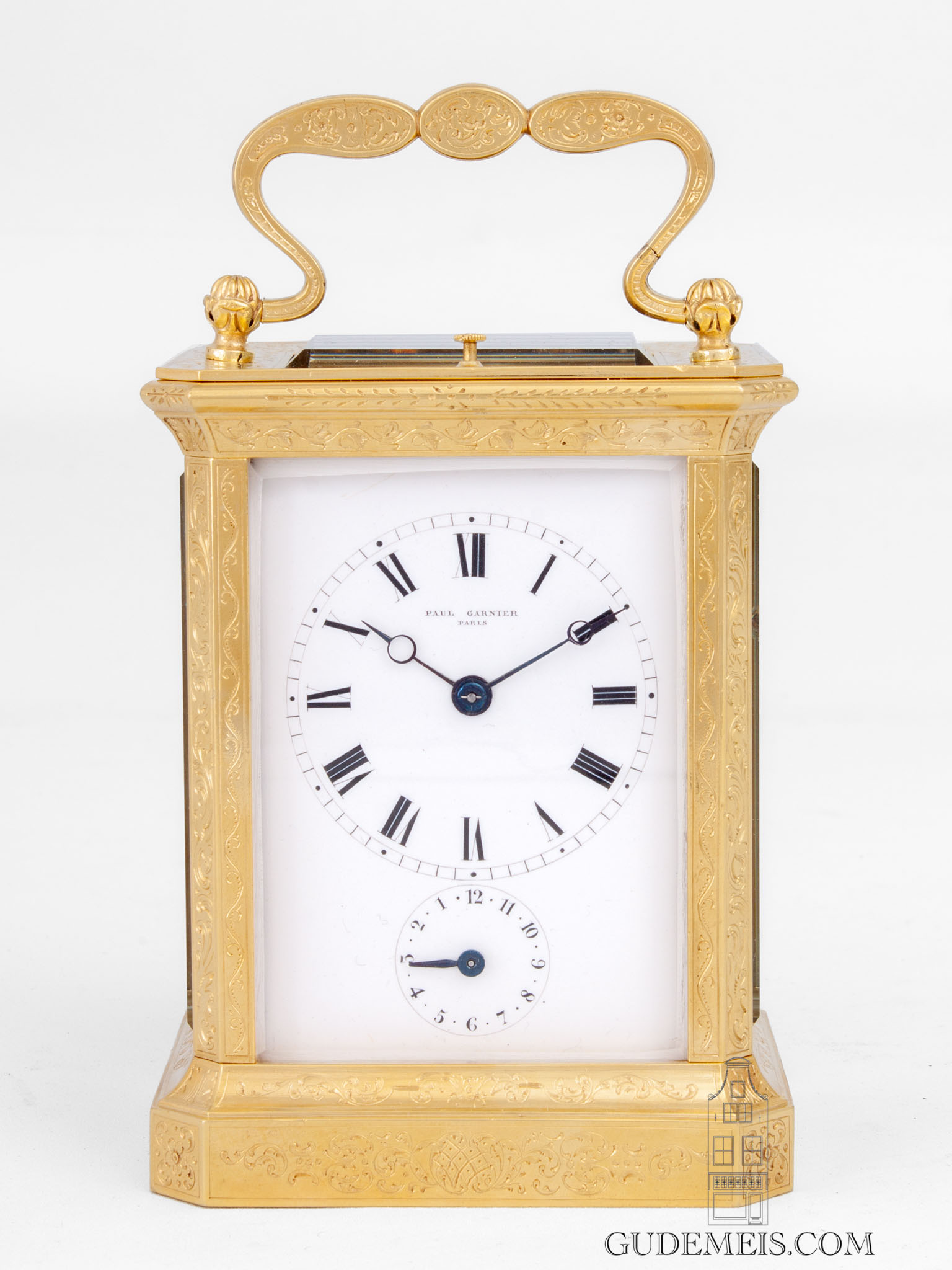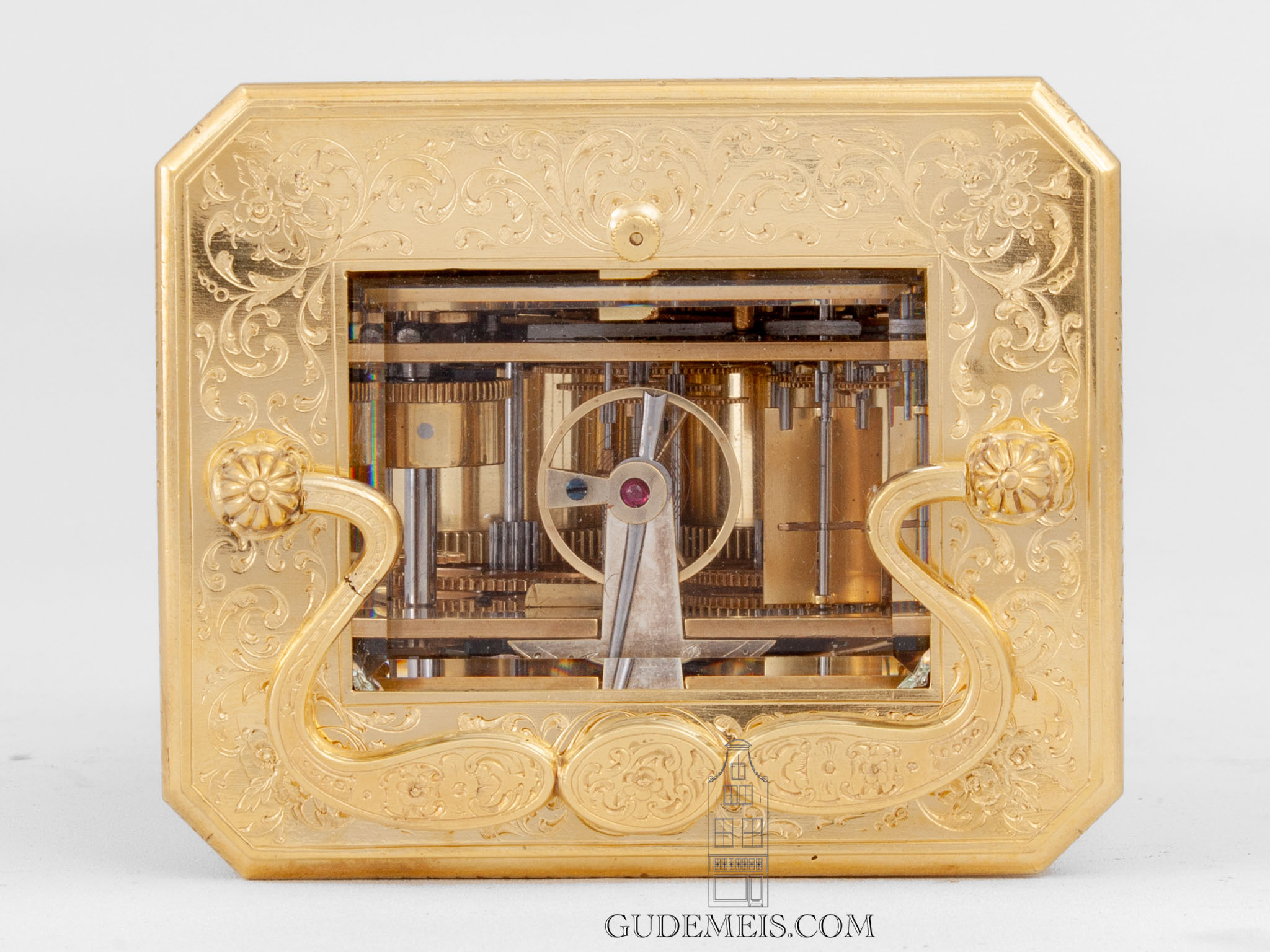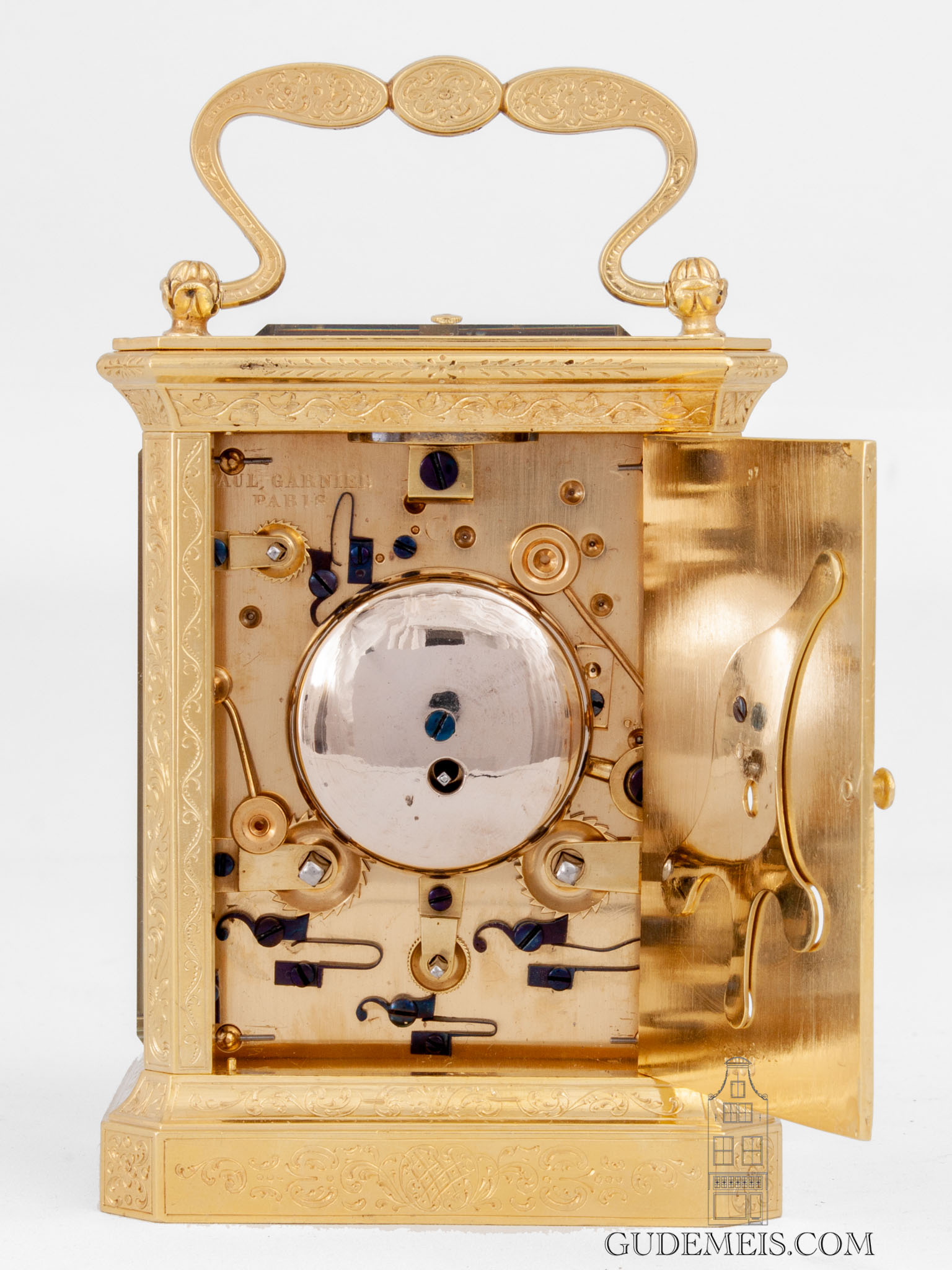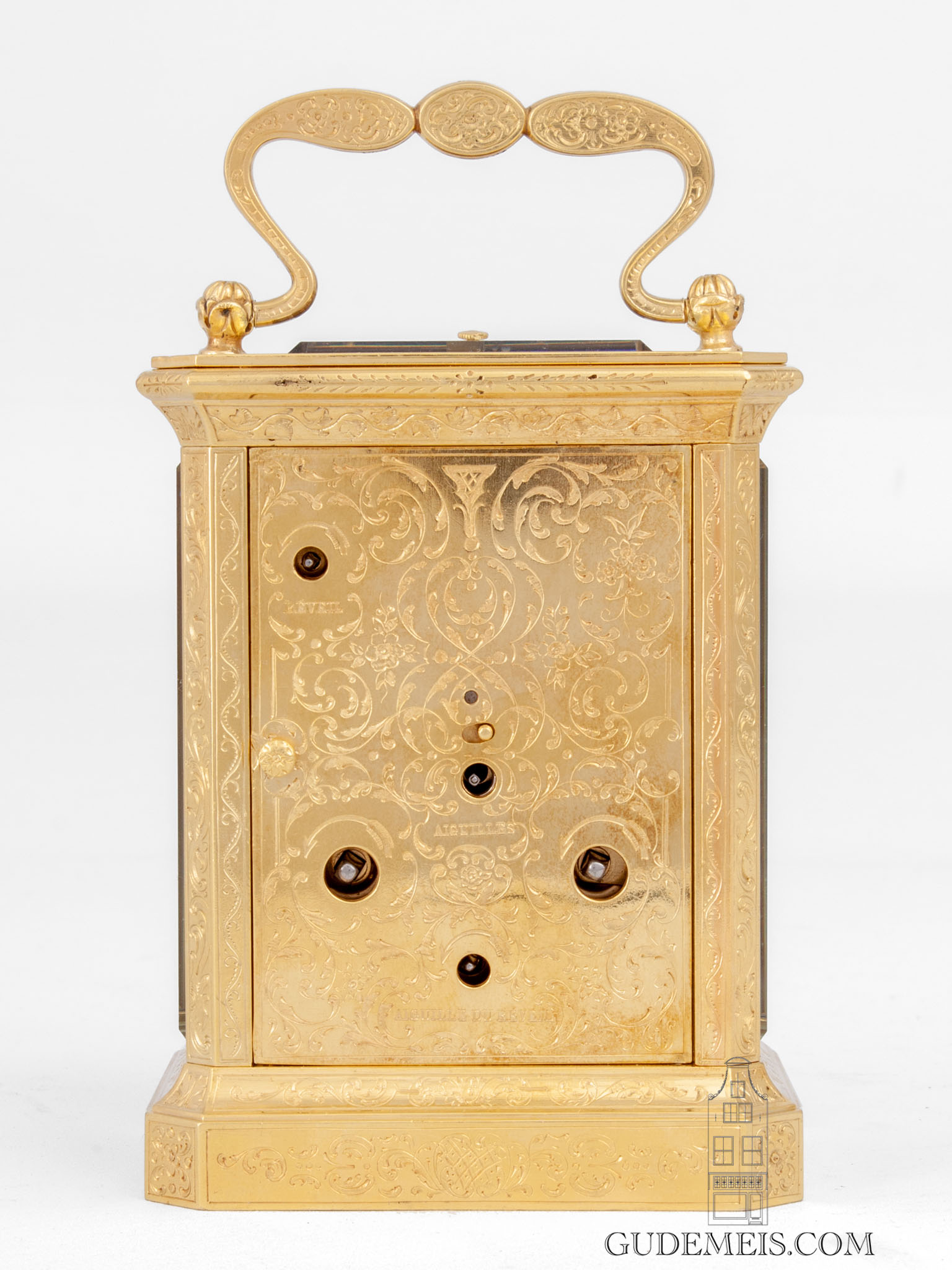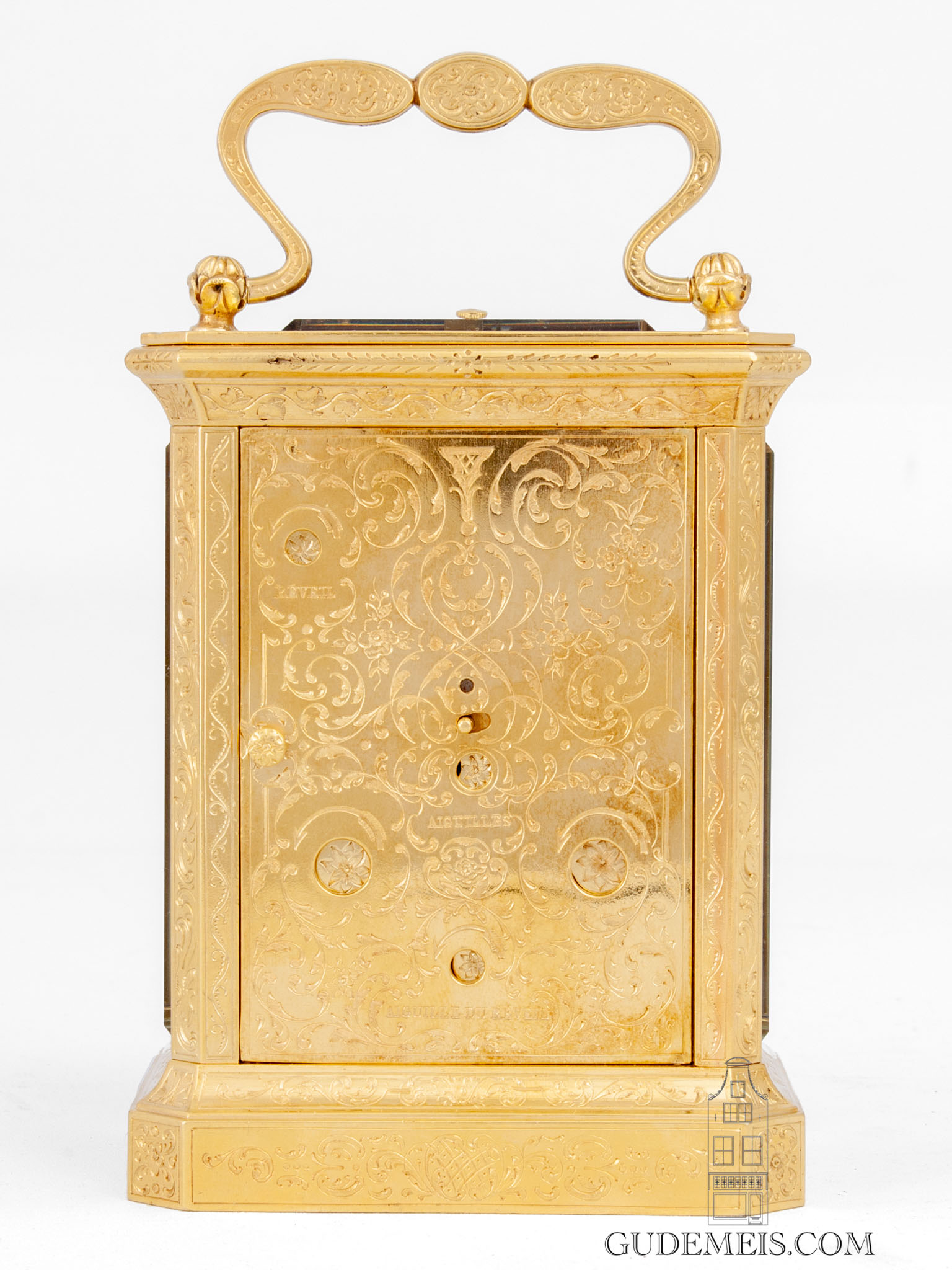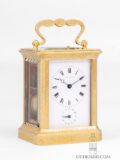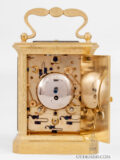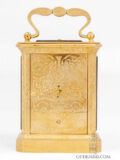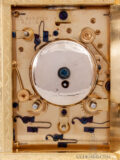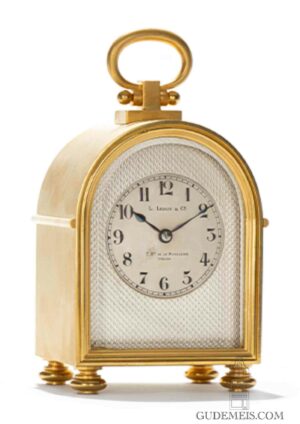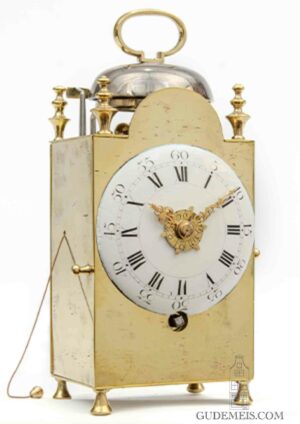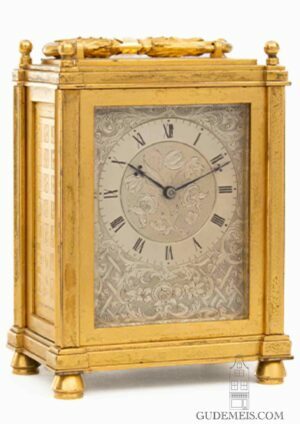A French engraved gilt carriage clock with chaff-cutter escapement, Paul Garnier, circa 1845.
Description
Paul Garnier
Paul Garnier (1801 – 1853) is widely regarded as the founder of the French carriage clock production. He invented a reliable and easy to produce escapement. It resulted in a relatively cheap carriage clocks that kept on running while being moved inside the house or during travel. He patented this escapement that he called ‘echappement à repos’ on September 30th 1830 after which the carriage clock production would increase tremendously in the following decades. In England the escapement is called ‘chaff-cutter’. It is a variation on similar escapements by Sully and Enderlin. It consists of a semi-circular disc with canted edges that is fixed directly onto the balance axis. Two ‘scape wheels that are fixed to an arbour are stopped alternately by this semi-circular disc and let through while the canted edge provides impulse to the balance axis. This escapement became his signature feature and is desired by connoisseurs and collectors alike. After the first production (series 0 and I) Garnier developed three types of cases that were presented next to each other (II, III and IV). This clock is a luxury version of the type IV. The case is beautifully engraved also on the closed backdoor with shutters. And the movement is executed with rack striking and repetition while more simple clocks were executed with countwheel striking.
The dial
The enamel dial has Roman numerals and has an subsidiary for alarm below. It is signed Paul Garnier Paris and the Breguet hands are made of blued steel.
Chaff-cutter escapement
The movement is driven by two spring barrels and has a duration of eight days. The clock is equipped with the famous chaff-cutter escapement patented by Paul Garnier as stated above. It has a plain balance. The clock strikes the hours and half hours on a bell by means of rack striking. By pushing the button the last hour that was struck will be repeated. The alarm is driven by a small auxiliary spring barrel. The backplate is also signed Paul Garnier Paris at the left top.
Series IV
The gilt brass case is surmounted by a shaped handle. On top the case has a large glass panel showing the escapement very nicely. The whole case is adourned with finely foliate engraving of very high quality. The front and sides also have glass panels. The solid brass back door is numbered 5288. It is also beautifully engraved and has shutters for the operating arbours. The case has canted corners and is placed on a moulded plinth. Derek Roberts states in his renown book on carriage clocks that; ‘..This case style which evolved circa 1845 is in the author’s opinion one of the most attractive ever produced, the canted corners, the delicate engraving and the design of the handle all complementing each other perfectly. ‘
Lit; Derek Roberts, Carriage and other travelling clocks, 1993. pp.41-68, 86.

